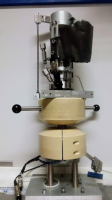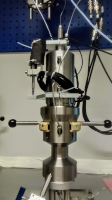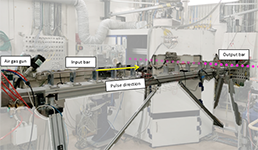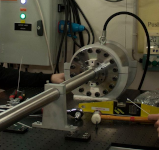- Home
- Users & Science
- Find a beamline
- Matter at extremes
- Geobridge - Geoscience at the ESRF
- Experimental platforms
Experimental platforms
ESRF-EBS beamlines with strong research activities in geoscience
Overview of capabilities (PDF file)
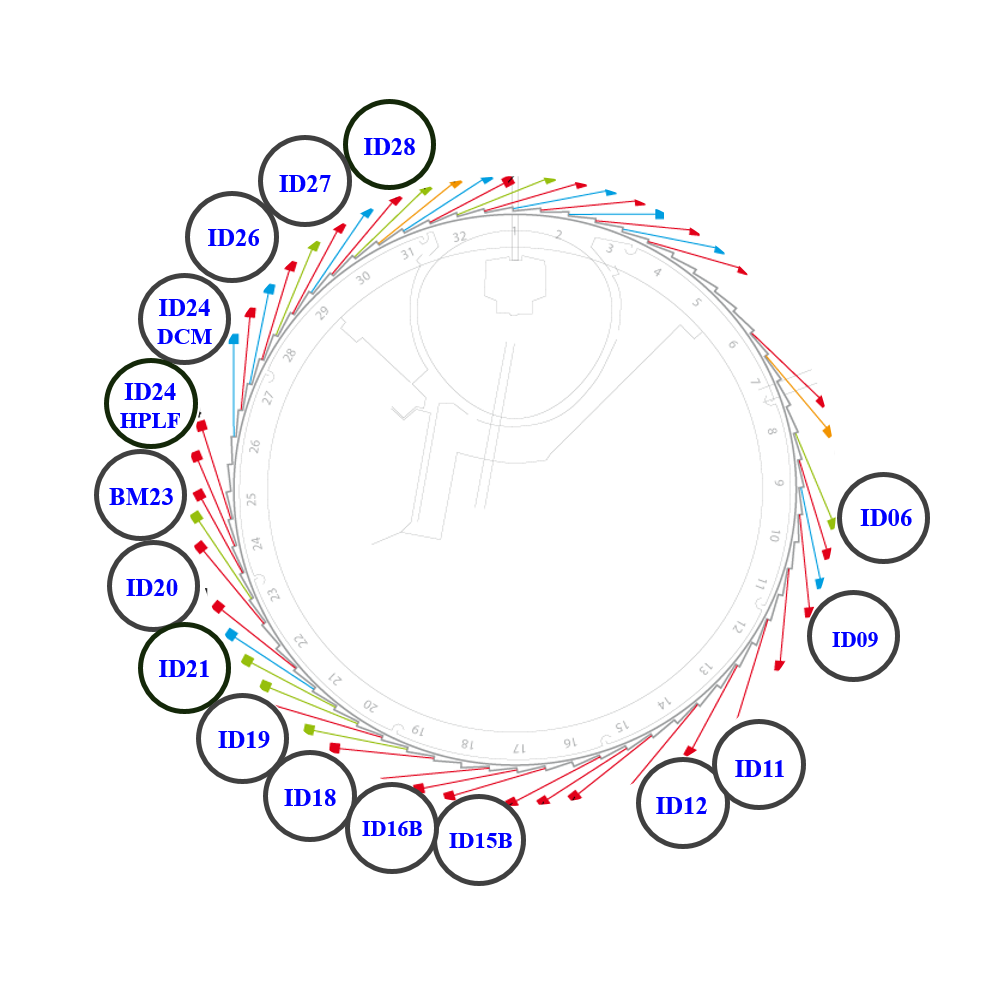 |
|
Beamline |
Examples of probed properties |
|
BM30 – X-ray Absorption/Emission Spectroscopy Autoclave, Paris-Edinburgh-Press, hydrothermal DAC |
Trace element transport/speciation/solubility at hydrothermal conditions |
|
ID28 - In-elastic X-ray Scattering (resistively heated) Diamond Anvil Cell |
Elastic properties of minerals at high pressure |
|
(resistively and laser YAG/CO2 heated, cryogenically cooled) Diamond Anvil Cell Paris Edinburgh Press |
Structure, phase transitions, density, viscosity to Mbar pressures and > 6000 K |
|
ID26 - (tender) X-ray Absorption/Emission Spectroscopy (resistively heated) Diamond Anvil Cell |
Trace element transport/speciation/solubility for low Z elements |
|
ID24-DCM – (hard) micron X-ray Absorption/Emission Spectroscopy (resistively and laser YAG heated, cryogenically cooled) Diamond Anvil Cell Paris Edinburgh Press |
Major and trace element transport/speciation/solubility to 100GPa pressures and > 6000 K |
|
ID24-HPLF – High Power Laser Facility for X-ray Absorption Spectroscopy Diamond Anvil Cell, high power laser (100 J ) |
Laser schock > 100 GPa and > 10000 K |
|
BM23 -micron (hard) X-ray Absorption/Emission Spectroscopy (resistively heated and cryogenically cooled) Diamond Anvil Cell Paris Edinburgh Press |
Major and trace element transport / speciation / solubility to 100 GPa and > 1200 K |
|
Diamond Anvil Cell |
Structural arrangements and electronic properties of light elements at extreme conditions |
| ID21 - (tender) nano X-ray Absorption/Emission Spectroscopy | Nanoparticles transport/speciation/solubility in biological samples |
|
ID19 - X-ray Imaging, tomography and fast acquisition Triaxial apparatus, Split Hopkinson Bars, Gas Gun |
Fluid percolation, fault generation, large samples rheology at pressure and temperature, shocks |
|
ID18 -X-ray Synchrotron Moessbauer spectroscopy (resistively and laser YAG heated, cryogenically cooled) Diamond Anvil Cell |
Structural and magnetic properties up to 100GPa pressure and > 6000 K |
|
BM16 – high resolution X-ray Absorption/Emission Spectroscopy Autoclave |
Trace element transport/speciation/solubility at hydrothermal conditions |
|
ID15b - micron X-ray Diffraction (resistively heated and cryogenically cooled) Diamond Anvil Cell |
Structure, phase transitions, density, viscosity to 100GPa pressures |
|
ID12 - X-ray absorption X-ray Magnetic Circular Dichroism (resistively heated and cryogenically cooled) Diamond Anvil Cell |
Light element transport/speciation/distribution in natural samples (Sulfur/Phosphor/Vanadium) |
|
ID11 - high resolution X-ray Diffraction Uniaxial press, Diamond Anvil Cell |
Structure, defects, faulting |
|
ID09 - time-resolved X-ray Diffraction Diamond Anvil Cell, high power laser (350mJ ) |
Shock compression |
|
ID06 - X-ray Diffraction coupled to the large volume press Large Volume Press |
Structure, phase transition and elastic properties at high P/T |
|
Triaxial apparatus |
rheology at high pressure, paleontology, archeology |
Experimental devices available to the scientific community
|
|
HADES is a triaxial-press able to mimick Earth environments up to 10 km depth. It can host 10 mm long by 5mm diameter rock samples and bring them to 100 MPa confining pressure under a temperature of 200 degC. It can also apply 200MPa axial stress and circulate any fluid within the tested rock.
|
|
|
KORE, also known as Perspehone, is the lover and counterpart of HADES. It is an upgraded triaxial-press with similar capacities to HADES but an axial stress able to easily reach 400 MPa. Sample are 20mm long for 10mm diameter and the rig is also equiped with 4 piezoelectric acoustic sensors. Two are in close contact of the sample while the remaining ones are satellite sensors excentered from the sample. KORE remains under comissioning but has already been succesfully tested.
|
|
|
Hopkinson bars study the dynamic behaviour of materials under high loading rates. High strain-rate deformation can be achieved (from 100 up-to 1000 1/s) with high force amplitude (Fmax can go up-to 40 kN for aluminium bars and 90 kN for the steel bars)
|
|
|
GAS-GUN impacting samples at up to 1Km per SECOND and imaging the resulting shock-wave. This is what the gas-gun is able to achieve.
|
